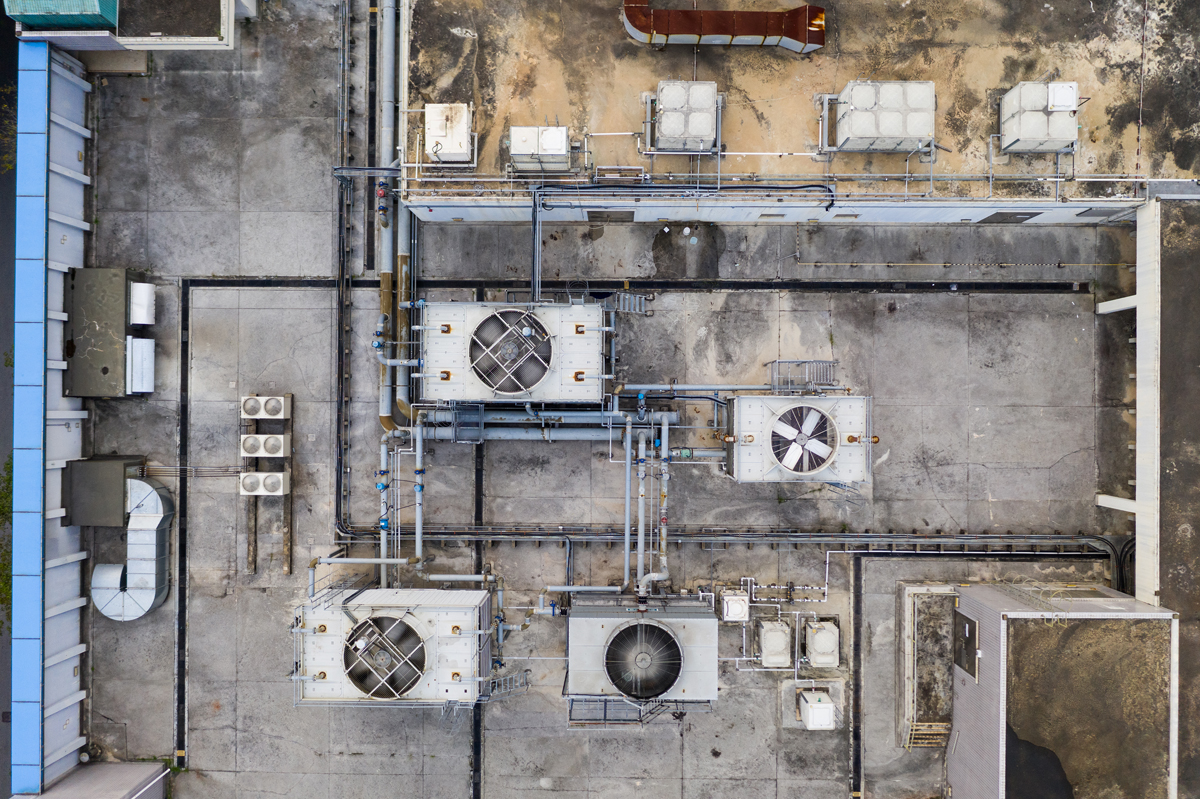There are many similarities and differences between forced and induced draft cooling towers. To figure out which application is best for your industry, follow our guide below.
Forced Draft Cooling Towers
Industrial plants and factories continually opt for these cooling tower models for their many benefits. These towers remove low-potential heat that is generated during the production process. Hot water combined with a counterflow of air will result in a transfer of heat in the cooling fill. These models are especially popular in the paper and chemical industries.
These are the components that make up a forced draft model:
- Fan stack.
- Fan with drive.
- Drift eliminators.
- Cooling fill.
- Outer shell.
- Water distribution system.
- Water basin.
Induced Draft Cooling Towers
This type of cooling tower is a mechanical draft tower that usually features more than one fan. The fans can be found atop the cooling tower, bringing air upward against a strong downward flow of water. Water is then passed around the wooden decking, with the coolest water located at the bottom. There, the water comes into contact with the driest air since the airflow counters the flow of water.
The warmest water will be found close to the top of the tower, making contact with moist air. This will result in a quick and efficient heat transfer. These towers come in either square or round shapes, distributing water through a static branch or sprinkler system.
Incoming water will be spread throughout the tower via a spray distribution header. Spray is directed downward, which maximizes the chance of water and air making as much contact as possible. The cooling water fill is responsible for creating contact. Induced draft models are generally accepted as the most effective solution to the any industry’s cooling needs.
These components make up an induced draft cooling tower:
- Fill.
- Basin.
- Piping.
- Spray nozzles.
- Fan.
- Drift eliminator.
- Casing/shell.
Forced Draft Vs Induced Draft Cooling Towers
How do forced draft towers differ from induced draft towers? Induced draft towers will have a fan atop the tower, which pulls the air upward. The fans will then induce the hot and moist air out of the discharge. A powerful exit air velocity then reduces any possible recirculation within the tower. The main goal of induced models is to eliminate any discharged air flowing back inward to the air intake area.
Forced draft cooling towers will feature the fan at the base of tower, instead. Both axial and centrifugal fans will then create the overpressure.
Advantages of a forced draft cooling tower:
- Ease of maintenance.
- Low noise level.
- Low absorbed capacity.
Advantages of an induced draft cooling tower:
- Low absorbed capacity.
- Requires less space for installation.
Universal Tower Parts In Phoenix, AZ
Universal Tower Parts provides stainless steel and galvanized options, welded and gasketed, direct, gear reducer and belt drive units, with efficient Jedair fans, and Jedair low noise fans. Strainers, fan guards and louvers are well constructed, and designed to operate efficiently as they perform their function. Cool Core drift eliminators and fill are made by Universal Tower Parts expressly for our towers.





